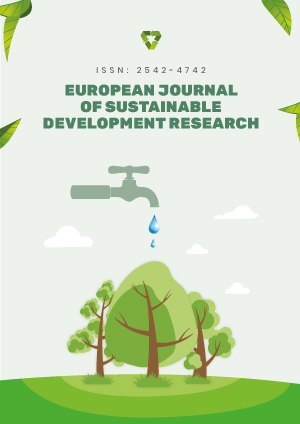Abstract
The quality of potable water can deteriorate significantly when stored in different types of containers, potentially posing health risks to consumers. Water storage containers, made from materials like plastic, clay, and aluminum, can interact with water both chemically and biologically, leading to contamination. Understanding how different storage materials affect water quality is crucial, especially in regions relying on extended storage. This study aims to evaluate the impact of different storage container materials (white plastic, blue plastic, clay, and aluminum) on the physio-chemical and bacteriological properties of potable water. Water samples were collected from a hand pump at FUTO Hostel C and subjected to laboratory tests both before and after storage in white plastic, blue plastic, clay, and aluminum containers. The parameters tested included pH, turbidity, conductivity, total dissolved solids, dissolved oxygen, total hardness, total chloride, manganese, iron, chromium, lead, and bacterial counts (heterotrophic and coliform). Water quality indices were calculated based on the Nigerian Industrial Standards (NIS 977:2017). The initial water quality was classified as “good” with a water quality index (WQI) of 34.98. However, after storage, significant deterioration was observed across all container types. Water stored in white plastic had a WQI of 91.69, while blue plastic resulted in a WQI of 78.87, both indicating “very poor” water quality. Clay storage also yielded a “very poor” WQI of 76.97, mainly due to increased turbidity and bacterial contamination. The most severe deterioration was seen in aluminum containers, with a WQI of 217.67, classifying the water as “unfit for consumption” due to excessive manganese (1.8 mg/L) and iron (0.51 mg/L) contamination. The study reveals that none of the materials tested is ideal for long-term potable water storage. Plastic and aluminum containers lead to significant chemical contamination, while clay containers promote bacterial growth.
License
This is an open access article distributed under the Creative Commons Attribution License which permits unrestricted use, distribution, and reproduction in any medium, provided the original work is properly cited.
Article Type: Research Article
EUR J SUSTAIN DEV RES, Volume 9, Issue 3, 2025, Article No: em0310
https://doi.org/10.29333/ejosdr/16355
Publication date: 01 Jul 2025
Online publication date: 06 May 2025
Article Views: 2344
Article Downloads: 2038
Open Access References How to cite this article
 Full Text (PDF)
Full Text (PDF)